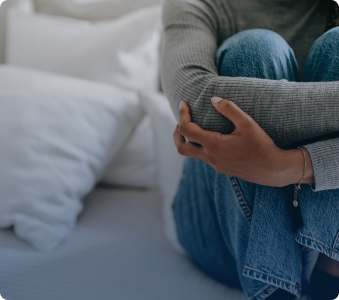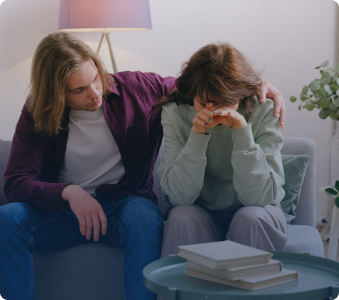Mar 31, 2014

When visiting a psychiatrist, there are many topics that a patient and the doctor need to discuss. Those topics include daily functioning, medication and side-effects, progress, or lack thereof, treatment, the patient might also want to ask questions and participate in the decision making process. However, because of the limited time that the patient has with the doctor, it is often impossible to cover all of those things properly. To address this problem, Pat Deegan, Ph.D., created CommonGround.
CommonGround is a Web application that allows the patient to create a health report and summary about how they are feeling before going into the doctor’s office. By doing so it enables the both the doctor and patient to make better use of their time by focusing on the important things and participate in the decision making process in terms of treatment and therapy. Allowing the patient to play a vital part in the medical decision making process for their treatment and recovery empowers the patient and helps them further in their journey towards their recovery.
CommonGround received the 2013 Thomas Scattergood Behavioral Health Innovation Award and the American Psychiatric Association’s Gold Achievement Award.
Pat Deegan specializes in the area of recovery and the empowerment of those living with mental illness. She talked to NAMI about the idea of shared decision making. Deegan will be presenting at the 2014 NAMI National Convention on Sept. 5.
NAMI: Could you tell us about shared decision making and how it works?
Shared decision making is a clinical method that is supported by various technologies and has its roots in medicine. It is a process in which the clinician and client discuss and exchange information until they reach a mutually agreed upon decision regarding the next step in treatment. Studies show that doctors just can’t predict patient’s preference for treatment when other things are equal. It is a process in which there are two experts in the room: the physician is an expert in the scientific evidence and the practice of medicine and the patient is an expert in what matters to them in their life.
Shared decision making is not really necessary in scenarios when there is a clear diagnosis and treatment route. An example of this would be type 1 diabetes, there is no shared decision in the use of insulin because it is the only option. However, shared decision making is important when there are more than several options in terms of medication and treatment, moreover it is important to recognize that all options have relatively the same effectiveness. When the scientific evidence supporting the efficacy of the treatment is not clear, the treatment options can be negotiated. For instance, for a woman in early stage breast cancer, there are a number of treatment options— everything from breast removal to chemo, radiation and hormone therapies. These treatment options have fairly similar outcomes but very different impact in the woman’s life.
Shared decision making is not recognized greatly in the behavioral health sector but we are working hard to establish it there.
How did you first discover the idea of shared decision making?
I became interested in shared decision making when I saw it used at the Dartmouth Hitchcock Hospital, which is part of the Dartmouth Medical School—one of the world’s leading institutions for shared decision making.
We know through studies of decision making, people who are using decision aids and participating in shared decision making tend to be more conservative about treatment options that they choose. For instance, they tend to choose surgery-less options and are conservative in the use of more radical treatments, which also helps drive down healthcare costs. There is also a strong ethical imperative that’s driving the use of shared decision making. That is that doctors can’t know what matters to us. We need to have a voice and be able to prepare and participate in a meaningful informed conversation with our doctors and nurses about the next steps in our treatment.
When I saw shared decision making in action at Dartmouth, I said we need this in behavioral health. I began to develop a web application called CommonGround that could be used in psychiatric medication clinics by people with serious mental disorders.
How does CommonGround work?
The way it works is that we replace the waiting area in mental health clinics with a station in which the patient is able to create their medical report. People are greeted by peer staff and invited to sit at a computer or to use an iPad to complete a health report that summarizes how they have been doing between now and the previous appointment. The computer program then organizes the information together into a one page health report about how the state of the patient and their main concerns. That report is then revised by the psychiatrist and/or nurse.
Currently, there are over fifty sites around the country that are using CommonGround and the method for shared decision making. Additionally, places like the Mayo clinic and SAMHSA have begun to create their own centers for shared decision making.
What might be the challenges in embedding shared decision making within clinical settings?
I think it’s the same challenges that are shared by trying to implement any evidence-based practice. Successful implementation of innovation and evidence-based practice require visionary leadership, alignment of funding and an organization’s willingness to sustain the effort overtime through fidelity reviews. Those are the three things that we know from studies that make implementation successful.
Has there been a study that has evaluated the pros and cons of SDM?
It is important to know that the federal government has embraced shared decision making in the Affordable Care Act. It’s the direction in which we are going. The National Institute of Medicine has established shared decision making in the involvement of the patient at the center of the care team as one of the aims of medicine in the 21st century. This is a method that is being embraced at the level of science, at the level of ethics and at the level of policy. This is where healthcare is going and behavioral health has to get onboard. We’re helping that happen with the help of the various partners that are involved in making this migration of shared decision making from general health care to behavioral health. It’s here and it’s not going to go away.
What can be done to change the culture of the mental health services in patient care and inspire healthcare professionals to use shared decision making?
I think we’re doing a lot. We have federal and policy buy-ins and we do national webinars. We have SAMHSA involved in the development of decision aids. We have academic centers that are creating better research and tools for shared decision making in behavioral health. We have partners in the private sector who are actively working on rolling out decision aids and exploring new ways of implementing these in the field. It’s always a challenge to scale things and to bring things up so they are universally used, but it’s happening and we are getting there. It’s really important to understand that shared decision is not just doing collaboration or having a conversation where you ask questions, it’s a careful process.
Did your personal experiences help lead you to realizing the importance of shared decision making?
I am a person living in recovery. I was diagnosed with schizophrenia when I was 17. I never had any opportunity to participate in in the decisions that were made for me. What typically happens is that people are prescribed their medication and it is assumed that they can’t participate in the decision that was made. I am out to change that.
When my treatment team was in charge, they over medicated me in my early recovery so badly that I lost years of my life sitting in a drug-induced state. I was among the walking dead. I was in chemical hibernation. My treatment team was thrilled because they thought I was doing great for someone with schizophrenia but I wasn’t satisfied with the state that I was living in. The situation hasn’t changed much and out there all across the United States that still is what you will see a lot, people in recovery sitting in lonesome apartments of single room occupancy-home, staring at a blank TV screen, smoking cigarette and drinking coffee. That’s not recovery and you’re not part of the community again. We want to see people being reintegrated. Shared decision making is going to help us with the terrible problem of polypharmacy and profound overmedication, which is still rampant in our country. Recovery requires more than taking medicine, it’s about creating a life worth living.

